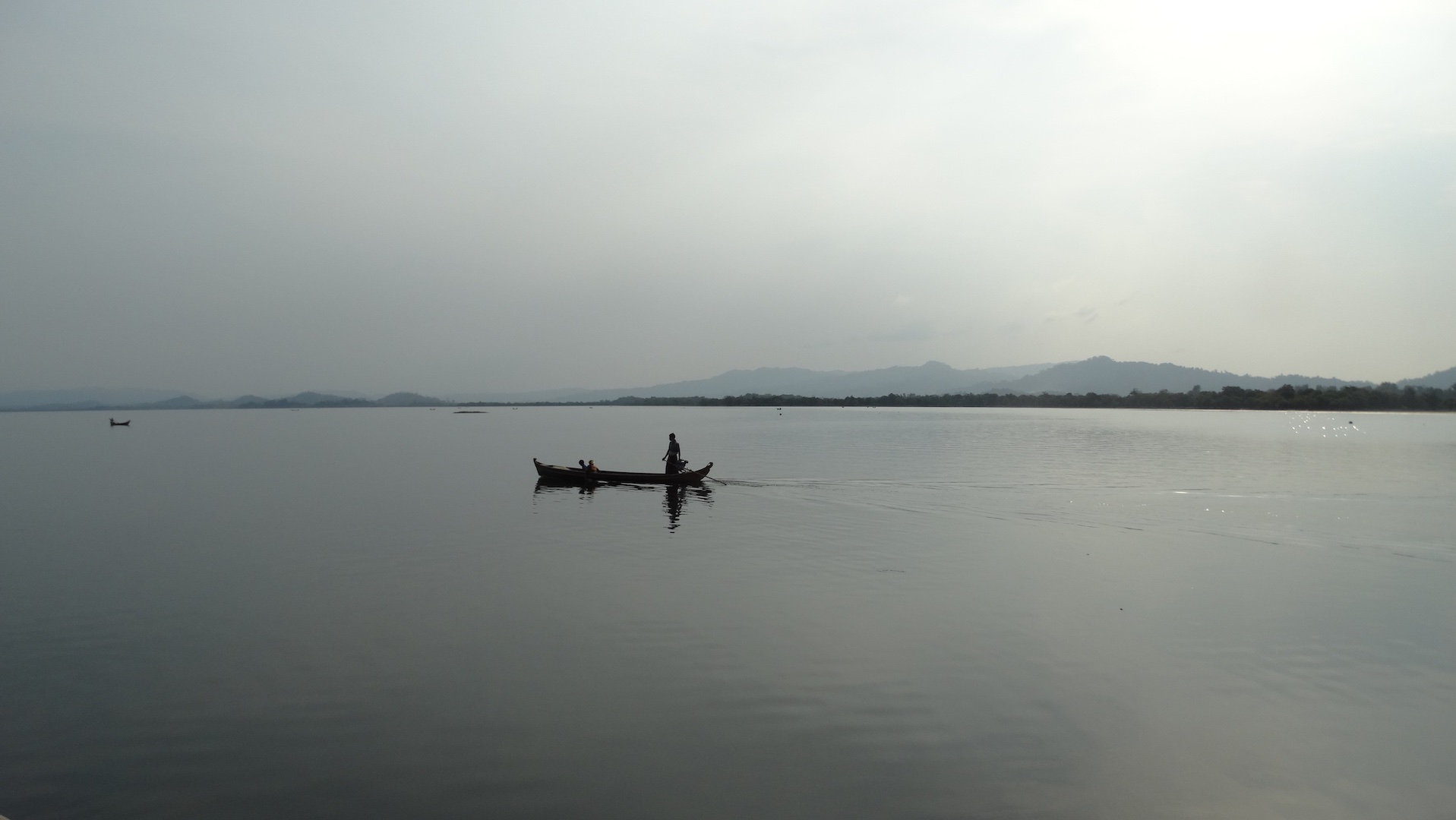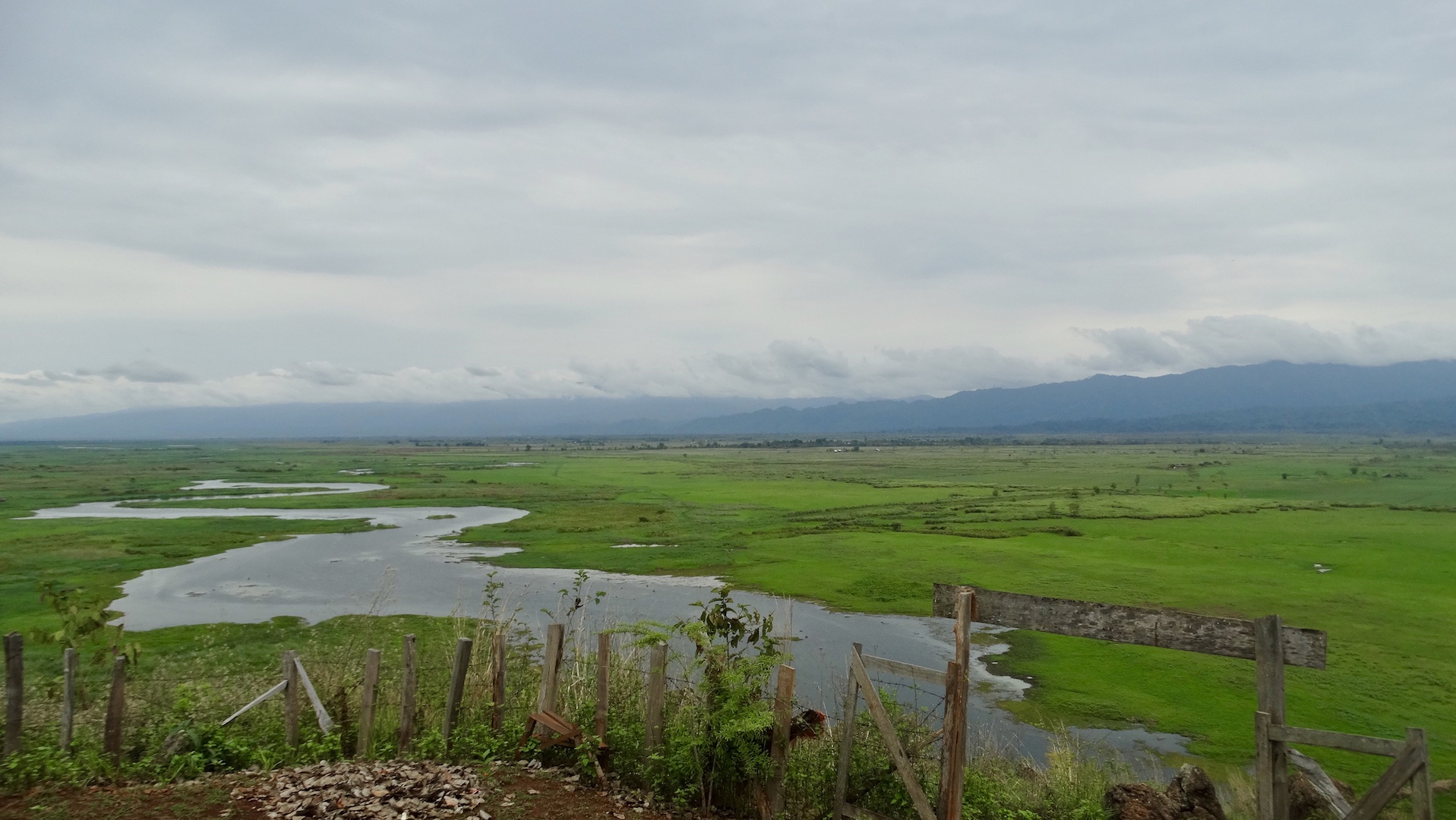WHEN INDAWGYI LAKE, PART 1

A mainstay on the Burmese backpacker trail, Inle Lake draws many baggy, cotton trouser wearers to its picturesque shores and hiking trails. A distant second in terms of visitor numbers, but still mentioned in various aspirational, holiday guide books is Indawgyi Lake. Authors almost universally warn of lengthy and uncomfortable journeys to get there. However, these are balanced by glowing reports of pristine nature and wildlife reserves, virtually unexplored by said loose-fitting clothing enthusiasts. I was already travelling North from Mandalay to Katha, with Indawgyi Lake a continuation (via Hopin) from there.
Red Tape Rituals
In Hopin, I needed further transportation to get to the village of Lonton, on the shores of the lake. I had chosen this location, based on the fact that it had the only foreigner licensed accommodation in the area. After securing the services of a scooter taxi our first stop was the local police station. Here, I had to produce my passport, register and indicate how long I would be staying in the area. Producing one’s passport is a regular occurrence in Myanmar, with the details being dutifully transcribed, photocopied and generally scrutinised.
One hostel proprietor exasperatingly explained to me that he had to make five photocopies of my passport, and take each one to a different administrative department in the town. The now familiar and sturdy language barrier prevented me from gathering more information about the rationale for this process. However, I secretly quite liked the idea of my mugshot being circulated amongst local officials. I felt like a fugitive in an American frontier town.
The Only Guesthouse in Town
When there is only one guesthouse available, I find added comfort in the knowledge that there is nowhere better. There are no guests elsewhere with keener research skills, connections or luck, luxuriating in their superior surroundings. As it turned out, the slightly ramshackle single-storey building boasted a veranda with spectacular views of the lake and. And, like most places in Mynamar, a never ending Thermos flask of green tea.
It was evident en route from Hopin to Lonton that the local government is trying to make the area around Indawgyi Lake more accessible by road. Monstrous Cat vehicles scraped and gauged at the hillside, like determined dogs hunting for rodents in the soil. An army of labourers supported their efforts – many of whom were weary children – toiling in the dust and rubble; the insects that made up the triumvirate of my questionable, animal metaphor.
According to a local, their endeavours were in aid of the thriving gold mining industry as opposed to tourism infrastructure. It would later become clear where many of their priorities lay, however.
UNESCO Status
I wasn’t sure how long I was going to stay by the lake, but I was keen to get a sense of the communities and wildlife that thrive on the lake and shores and in the surrounding hills and forests. In 1999 Indawgyi Lake Wildlife Sanctuary (ILWS) became a UNESCO protected area. It covers 73,600 hectares and ranges in elevation from 169m at the lake surface to over 1,400m.
I still don’t really have any perception of what a hectare is. I don’t know how long it would take to walk across, or – using the oft quoted measurement – how many football pitches you could get inside 70 odd thousand of them. Even km cause me problems, and I still base my understanding of miles on my childhood walk to school. That was about 3 miles and took around 25 mins, allowing for some shoving with my walking companion or attempts to buy cigarettes from shops.

The ‘outstanding universal value’ badge relates to the various endangered or endemic species that you can find in ILWS. These include migrating water birds, turtles and fish. One of my justifications for enduring the journey here was to see some of the wildlife in the area and make use of the binoculars that I had bought before leaving Scotland; and had been carrying around for months ever since.
Bring your Binoculars
Binoculars were as much part of my childhood family holidays in the West Highlands of Scotland as midges, rain and Monopoly. It was quite common to get the ‘binocs’ out before the holiday had really started. It might be during our journey or at a picnic stop and was usually with the intention of getting a closer look at a bird of prey circling a field. Or, in my case, to look through them the wrong way and pretend that I was in a long tunnel.
However, it wasn’t until my thirties that I became comfortable displaying them round my neck on treks or boat trips. Their emergence has been accompanied by increasingly poor fashion sense, earlier bed times, herb tea, ear hair and all the other features of ageing that I have had to make my peace with…